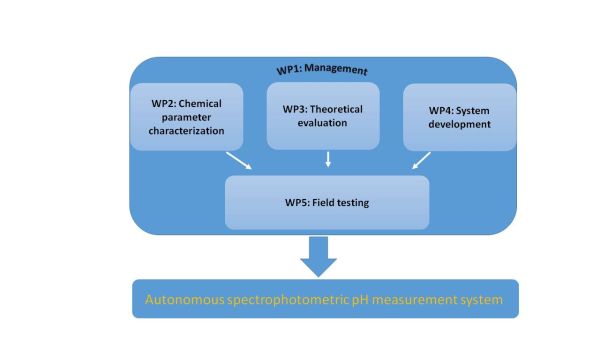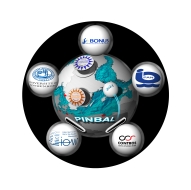Work packages of PINBAL
The project PINBAL consists of five interacting work packages (WPs):

WP 1: Management, organization, dissemination and reporting of the project.
This work package includes all activities related to management, communication, reporting, and dissemination of the project. Within WP1, annual meetings will be organized, scientific meetings will be called, and all reporting duties will be coordinated. The WP will also address contact and information to stakeholders and the BONUS EEIG, and launch and maintain the project‟s web page.
PI: Gregor Rehder
WP 2: Chemical parameter characterization
The main objective of WP2 is the systematic execution of chemical experiments needed for the application of the spectrophotometric determination of pH using m-cresol purple over the widest possible range of conditions for the Baltic. While recent developments indicate the readiness of the method for use under open ocean conditions (Carter et al., 2013, Aßmann et al., 2011), several aspects have to be investigated or overcome for the use in brackish water systems like the Baltic. The required investigations will be performed in the labs at IOW and UGOT, where state-of-the-art spectrophotometric pH-measurement systems are established.
PI: Gregor Rehder
WP 3: Theoretical evaluation of perturbations and uncertainties
The objectives of this WP are to (i) provide a parameterization of the perturbation of pH that occurs on addition of indicator; and (ii) to calculate the measurement uncertainties inherent in using the m-cresol purple indicator over the range of conditions encountered in the Baltic Sea. This WP thus provides a theoretical complement to WP2. The theoretical approach allows the effect of many different combinations of parameters to be assessed. The resulting parameterizations can then be tested against the experimental results obtained in WP2.
PI: Leif Anderson
WP 4: System development
Driven by theoretical as well as applied scientific input generated from simulations, lab experiments and field evaluation from the academic partners (WPs 2, 3 and 5), a sensor prototype will be built up that enables reliable, accurate, stable and traceable pH measurements free from cross-sensitivities and in CO2-system quality for the demanding environment of the Baltic Sea. Furthermore, the specialized sensor prototype should be capable of measuring pH in continuous/underway mode as well as from discrete samples. In the optimal range, we aim for an accuracy of the measured pH value of ≤0.002 pH, a precision ≤0.001 pH, and basically no drift (<0.001 pH/year).
PI: Peer Fietzek
WP 5: Lab and field testing of prototype instrumentation
The main objective of WP5 is to test all aspects of the performance (accuracy, precision, robustness to field conditions, user-friendliness, etc.) of the instrumentation developed within the project in the range of environmental conditions observed in the Baltic Sea. This will include both lab experiments performed at IOW and UGOT, test runs on platforms allowing continuous measurements (TransPaper line, UGOT, and FINO II platform, IOW), and joint field experiments during seagoing expeditions on r/v Oceania and r/v Elisabeth Mann Borgese.

